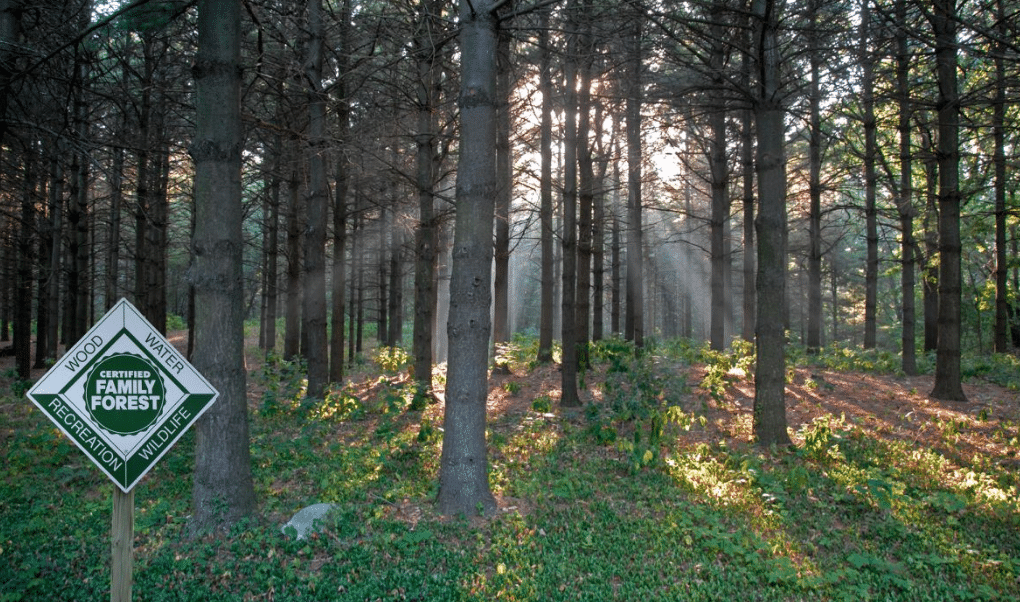The American Forest Foundation (AFF) is set to launch a groundbreaking carbon auction in February 2025, focusing on carbon credits generated through its Family Forest Carbon Program (FFCP).
This initiative aims to offer companies a streamlined and transparent process to purchase high-quality nature-based carbon credits. At the same time, it will also provide support for rural communities and family forest owners.
Unlocking Nature’s Carbon Potential with Carbon Credits
As more companies work towards reducing their carbon footprints, there’s a pressing need for upfront financing to implement nature-based carbon projects that meet global climate goals. Nature-based solutions, which leverage natural ecosystems like forests to sequester carbon, have significant potential but remain underfunded.
Currently, only 1.2% of the annual potential of these solutions has been tapped through the voluntary carbon market (VCM). This underinvestment is a key barrier to reaching climate-mitigation targets and keeping global temperature rise below 1.5°C.
Moreover, prices of nature-based carbon offset credits have been plunging and falling below $1.0/ton since July this year.
The AFF Carbon Auction aims to bridge the funding gap by providing upfront payments. This approach enables project developers to kickstart their initiatives, ensuring a steady supply of high-quality carbon credits, that contribute to climate resilience. By linking payments to the progress of projects, the auction model will align corporate investments with tangible climate impacts.
How the Auction Works
The auction process is designed to simplify how companies buy carbon credits. All necessary due diligence resources will be available in one centralized location, allowing companies to review information over several weeks before the bidding period.
During the one-week auction in February, companies will place bids on the credits they wish to purchase. This approach will provide a transparent view of the market and competitive pricing.
Additionally, the FFCP benefits from this structure by gaining the upfront funding needed to scale its carbon-saving projects.
Redefining Investment in Nature-Based Solutions
The AFF Carbon Auction introduces a novel approach to financing nature-based carbon projects through hybrid commercial terms. Traditional carbon credit purchases often involve payment upon delivery, which can delay project initiation.
However, the auction will offer partial upfront payments, allowing buyers to secure credits at a discount while providing developers with the capital they need to get started.
This method will enable companies to tie their investments to specific milestones, such as the number of acres enrolled in the program and successful verification steps. Such down payments help ensure that projects deliver measurable environmental and community benefits.
Buyers also benefit from this model by securing carbon credits at competitive prices, protecting themselves from potential future price increases while contributing to long-term decarbonization goals. Major companies like Google are massively investing in nature-based carbon removal solutions.
According to the International Union for Conservation of Nature and Natural Resources, nature-based solutions could contribute 30% of the global mitigation by 2030 to achieve the critical temperature rise goal of the Paris Agreement. They also have the potential to achieve emission reductions and removals of at least 5 GtCO2e per year by 2030, out of a maximum estimated potential of 11.7 GtCO2e per year.
- In addition, nature-based solutions could generate USD 393 billion in cost savings by 2050 by reducing the intensity of climate hazards by 26%.
When the AFF auction begins in February, both removal and emission reduction credits will be up for bidding, with removal credits making up the majority. Buyers will have the opportunity to place bids on four different terms:
Empowering Small Landowners
A central goal of the AFF’s Family Forest Carbon Program is to empower small landowners to take part in climate action. This partnership between AFF and The Nature Conservancy ensures that funding flows to forest owners who are implementing sustainable practices.
Tim Stout, a Vermont landowner enrolled in the FFCP, highlighted the importance of such initiatives in his mission to protect forests and combat climate change. He further highlighted that, with the right support, landowners have a remarkable capacity to make a difference.
The FFCP provides technical assistance and financial incentives to help small landowners manage their forests for optimal carbon storage. This approach not only captures carbon but also delivers ecological co-benefits like:
- improved water quality,
- enhanced biodiversity, and
- more resilient woodlands.
Reshaping the Voluntary Carbon Market
The AFF’s upcoming auction could help reshape the VCM in the United States by addressing key barriers to investment in nature-based solutions. Traditionally, buyers have been hesitant to provide upfront capital, creating a funding gap that delays project implementation. By offering a more direct and efficient way to secure credits, the AFF aims to make it easier for companies to participate in meaningful climate action.
Kevin Maddaford, director of US and Canada Carbon Markets at The Nature Conservancy, remarked:
“This groundbreaking auction will redefine how corporations invest in nature-based solutions to address the threats of climate change and biodiversity loss.”
The auction’s design also provides incentives for early investment, helping to secure the future of the carbon market. By offering discounts on credits for companies that prepay, the auction encourages buyers to commit to projects sooner rather than later.
The AFF’s Carbon Auction represents a pivotal moment in the evolution of corporate climate action, transforming the landscape of nature-based carbon credit projects in the country. By offering a transparent and efficient pathway for companies to invest in nature-based solutions, the auction has the potential to close the funding gap that has hindered the growth of the VCM.




